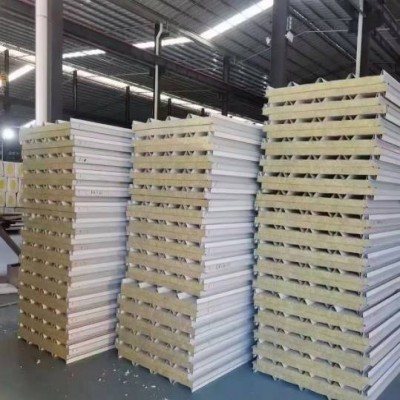If you just want the truth straight out of the gate — a carbon fiber sandwich panel is what you reach for when you’re tired of panels sagging, bowing, complaining about heat, and basically acting like divas every time the weather decides to throw hands. These things are strong, light, and save more labor hours than most general contractors want to admit. After two decades dragging panels through prefab yards and container retrofits, trust me when I say carbon fiber behaves differently.
Actually, let me paint the picture. I once walked into a Phoenix warehouse in summer — air thick enough to chew, forklifts screaming, some kid drilling self-tappers into aluminum without pilot holes. Meanwhile, I grabbed a 20 mm carbon fiber sandwich panel with one hand and thought, “This thing is about to save my spine.” That’s when my loyalty started.
All right, so here’s the simple version. A carbon fiber sandwich panel is two carbon skins with a lightweight core such as PET, PMI, PVC, or honeycomb. It’s a sandwich. But the way it handles stress? Completely different.
Dr. Deborah D.L. Chung in Carbon Fiber Composites (Elsevier, pp. 145–151) explains that carbon fiber’s tensile strength combined with a core spacing increases stiffness by an order of magnitude.
“Imagine steel strength and yoga-mat weight had a kid.”
Applications of Carbon Fiber Sandwich Panels
You start noticing these panels everywhere once you know what you’re looking at. Meanwhile, most folks walk right past them.
They appear in:
container home wall systems
prefab modular floors and roofs
marine interiors
EV battery housings
clean rooms
aerospace partitions
architectural façades
mobile labs and remote medical units
NREL (Karagiozis et al., TP-5500-61020) confirms lighter envelopes improve air sealing and long-term energy performance.
Advantages of Using Carbon Fiber Sandwich Panels in Construction
Here are the things that actually matter on-site.
Carbon fiber sandwich panels offer:
strong strength-to-weight ratio
low thermal movement
no corrosion
high fatigue resistance
stable seasonal performance
fire-safe core options
minimal maintenance
Dr. Mark Bomberg (Journal of Building Physics, Vol. 43) notes that low-mass high-rigidity assemblies maintain airtightness far longer than aluminum or steel systems.
Comparison Between Carbon Fiber and Aluminum Sandwich Panels
| Property | Carbon Fiber Sandwich Panel | Aluminum Sandwich Panel |
|---|---|---|
| Weight | Much lighter | Heavier |
| Stiffness | 3–5× higher | Medium |
| Corrosion resistance | Perfect | Needs coatings |
| Thermal movement | Very low | High |
| Cost | Higher | Medium |
| Lifespan | Extremely long | Long |
Prof. F.L. Matthews (Finite Element Modelling of Composite Materials, p. 87) explains why carbon composites retain stiffness under fluctuating loads.
Manufacturing Process of Carbon Fiber Sandwich Panels
The manufacturing always sounds fancy, but realistically it’s just controlled steps.
Builder version:
skins laid down
core inserted
vacuum bag applied
heat and pressure cure
CNC trimming and edge finishing
Dr. Suong V. Hoa states that consistent curing pressure is the key to performance.

How to Install Carbon Fiber Sandwich Panels
Installing these is almost relaxing — unless someone overtightens like they’re torquing lug nuts.
Tips:
use stainless fasteners
pre-drill holes
avoid overtightening
adhesives matter
seal edges
Cost Analysis of Carbon Fiber Sandwich Panels vs Traditional Materials
A carbon fiber sandwich panel costs $95–$240/m² depending on thickness and core type. Aluminum runs $35–$95/m². FRP is $25–$60/m² but too flexible for high-performance builds. Plywood and studs cost in labor and long-term stability.
ASTM C393 shear testing shows carbon fiber retains stiffness far better than traditional assemblies.
Maintenance Tips for Carbon Fiber Sandwich Panels
Maintenance is extremely simple.
Use soap and water.
Inspect fastener edges annually.
Protect edge caps.
Avoid sanding.
Environmental Impact of Producing Carbon Fiber Sandwich Panels
People assume carbon fiber is environmentally heavy due to production energy. However, once operational loads are included, systems perform far better long term.
NREL Life-Cycle Inventory shows operational load reduction offsets production energy.
ROCKWOOL Technical Guide confirms reduced transport emissions with low-weight systems.
ISO 10456 supports stable thermal behavior.
Latest Innovations in Carbon Fiber Sandwich Panel Technology
Recent improvements include:
recycled carbon skins
PET cores from reclaimed plastics
bio-resin systems
A2 fire-rated skins
CNC wiring channels
FM Global 1-28 Fire Hazard Datasheet now includes composite skins with improved profiles.
Safety Standards for Carbon Fiber Sandwich Panels
Carbon fiber panels commonly comply with:
EN 14509
ASTM D7249
ASTM C393
ISO 10456
IBC 2021
Best Suppliers for High-Quality Carbon Fiber Sandwich Panels
Reliable suppliers include:
Toray Advanced Composites
DragonPlate
Rock West Composites
ACP Composites
Gurit
Customer Reviews on Carbon Fiber Sandwich Panels
Example: A Nevada 40-ft container-office floor was upgraded from aluminum to 25 mm PET-core carbon fiber panels. Results were immediate.
zero flex
zero sound
zero thermal movement
install time reduced from 3 days to 6 hours
“Feels like steel, weighs like a joke.”
FAQ
Q1: Are carbon fiber sandwich panels too high-end for ordinary builds?
No. If your structure moves, expands, contracts, or travels, carbon fiber saves money long term.
Q2: Do they crack easily?
Not unless hit with a forklift. Aluminum dents first.
Q3: Can they be cut on-site?
Yes. Use carbide or diamond blades and avoid breathing dust.
Q4: Why do they cost more upfront?
Because they don’t warp, rust, or expand. Less maintenance over time.
Q5: Will inspectors approve them?
Bring EN 14509, ASTM C393, ASTM D7249, ISO 10456, and IBC 2021 documentation and approval is quick.


